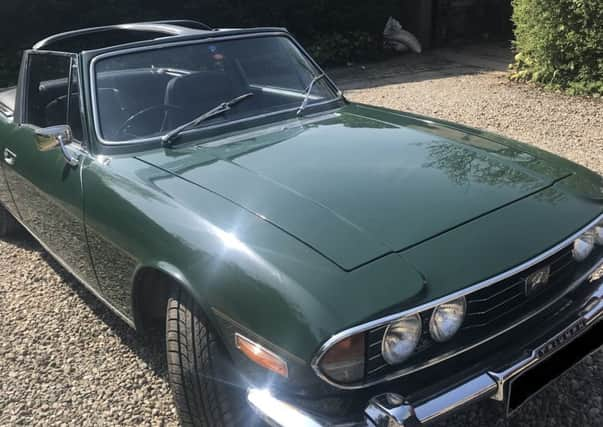Murdo Fraser: ‘Miserable’ Greens would put magnificent Flying Scotsman in a museum


One of the pleasures of a Scottish summer is enjoying a sunny day on our rural roads behind the wheel of a convertible, alive to the sounds and smells of the countryside in a way which is never possible when fully enclosed within steel and glass. If that convertible is a classic British sports car or tourer, then so much the better.
For years I have been the proud owner of a 1972 Mark 1 Triumph Stag, still with the original V8 engine, kept for days such as this. Tucked up in the garage to protect it from rain, salt, and rust, I will do no more than a few hundred miles each year in the Stag, the great majority of my everyday journeys being by more eco-friendly means – either by train or in a hybrid motor.
Advertisement
Hide AdAdvertisement
Hide AdI am not alone in enjoying a classic vehicle. The Federation of British Historic Vehicle Clubs estimates that its 540 member organisations throughout the UK have a total membership of more than a quarter of a million. Historic vehicles collectively sustain economic activity worth £5.5 billion annually to the UK economy, and support the employment of nearly 35,000 people. Over and above this, historic vehicles bring joy to millions each year, with classic car rallies, exhibitions, military shows, traction engine displays, and much more.
The importance of our historic vehicles has become a talking point in relation to the Scottish Government’s Transport Bill, currently under consideration at Holyrood. One of the measures being introduced is the creation of Low Emission Zones (LEZs), which will start in our city centres, and aim to exclude vehicles that do not meet the latest standards for emissions.
LEZs are an important reform, which will improve air quality in urban locations. While the principle is widely accepted, we do have to be careful about unintended consequences.
It is precisely for this reason that I am seeking an exemption from LEZ rules for historic vehicles, defined as any vehicle constructed more than 30 years ago. Without such an exemption, individuals within an LEZ would not be able to own or operate a historic vehicle. Moreover, this sort of vehicle would not be able to drive through a LEZ, meaning that historical vehicle exhibitions, rallies, and events could no longer pass through city centres, or be held at central locations. Nor would those wanting to be married at central churches, hotels or wedding venues be able to arrive in style in a vintage Ross-Royce or Daimler. It is hard to give credit to the argument that an exemption of this nature would have a significant negative impact on air quality in city centres.
Historic vehicles are seldom in regular use, and most owners, like myself, do a very low annual mileage. In total, historic vehicles represent just 0.2 per cent of total traffic on UK roads. The LEZs that exist in England, both the London ULEZ, and the other zones being set up under DEFRA’s Clean Air Framework, all exempt historic vehicles, and I would not want to see historic vehicle owners in Scotland being put at a disadvantage.
It might be thought that this measure would have widespread cross-party support, and indeed it does, with the sorry exception of the Scottish Greens. In response to my lodging amendments to the Transport Bill on the issue, one Green MSP thundered that my amendment belonged, like my car, in a museum.
If it really is Green policy to see all our historic vehicles driven off the roads and cut up into scrap, I wonder what else they have in their sights? Many thousands of Scottish families enjoy our heritage railways, like Bo’ness and Kinneil, or Strathspey. Running steam trains on the West Highland Line has proved a huge hit with Harry Potter fans. The recent running of the iconic Flying Scotsman locomotive was so popular that the operators had to keep its timetable a secret, for fear of rail enthusiasts putting themselves at risk by crowding near the tracks.
These coal burning steam locomotives cause pollution, burning fossil fuels, so presumably the Greens would want these banned too. Some might well be put in museums, but the rest would end up on the scrapheap. Is that really what we want for the Flying Scotsman?
Advertisement
Hide AdAdvertisement
Hide AdWhile we are all taking climate change more seriously than we have done before, I think we can take measures to tackle it without signing up for the joyless future that the Greens hold in store for us. It was noteworthy that the Green surge in the recent European elections was experienced all across the continent, including other parts of the UK, but the Scottish Greens were virtually alone in seeing no uplift in their support.
Perhaps if they weren’t so miserable they might attract a few more votes.